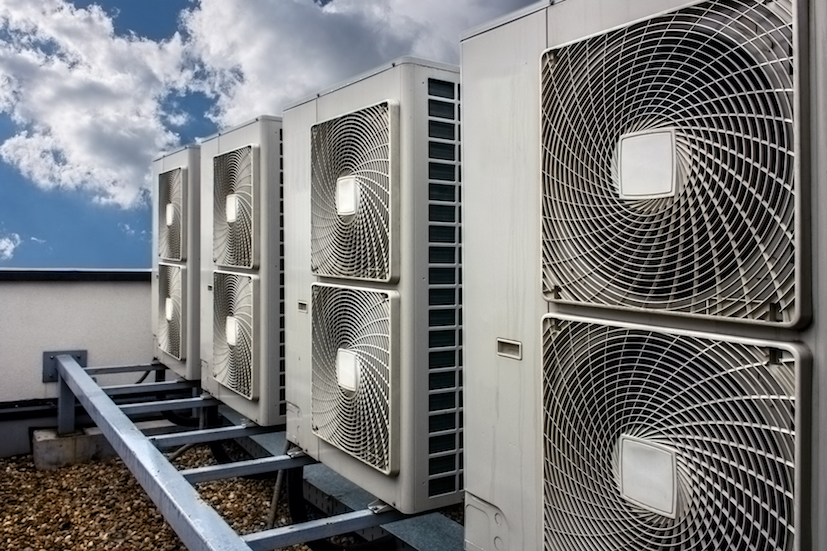In today’s rapidly advancing technological landscape, the integration of smart sensors into HVAC systems is revolutionizing the way we approach diagnostics and maintenance. As industry professionals seek to optimize energy consumption and ensure optimal performance, understanding the role of these sensors becomes crucial. Smart sensors for HVAC diagnostics are not just a trendy innovation; they are a necessity for modern buildings aiming for efficiency and sustainability.

The Importance of HVAC Systems
HVAC systems, which stand for Heating, Ventilation, and Air Conditioning, are integral to maintaining comfortable indoor environments. These systems regulate temperature, humidity, and air quality, ensuring that residential, commercial, and industrial spaces remain livable and safe. However, like all machinery, HVAC systems require regular maintenance and monitoring to function at their best.
What Are Smart Sensors?
Smart sensors are devices equipped with advanced technologies to detect and measure physical properties such as temperature, humidity, and pressure. They collect data, which is then processed and analyzed to provide actionable insights. In the context of HVAC diagnostics, these sensors play a pivotal role in ensuring the system’s efficiency and longevity.
Types of Smart Sensors Used in HVAC Systems
- Temperature Sensors: These sensors monitor the ambient temperature and ensure that HVAC systems maintain the desired thermal conditions.
- Humidity Sensors: They measure the moisture content in the air, helping to regulate indoor humidity levels.
- Pressure Sensors: These are crucial for detecting any pressure changes within the system, ensuring optimal airflow.
- CO2 Sensors: By measuring carbon dioxide levels, these sensors contribute to maintaining healthy indoor air quality.
Benefits of Smart Sensors in HVAC Diagnostics
Energy Efficiency
One of the primary advantages of integrating smart sensors into HVAC systems is enhanced energy efficiency. By providing real-time data and insights, these sensors enable precise control over the system’s operations, reducing unnecessary energy consumption.
Predictive Maintenance
Smart sensors facilitate predictive maintenance by identifying potential issues before they become critical. This proactive approach minimizes downtime and extends the lifespan of the HVAC system.
Improved Indoor Air Quality
By continuously monitoring air quality parameters, smart sensors ensure that indoor environments remain healthy and comfortable, reducing the risk of respiratory issues and improving overall well-being.
How Smart Sensors Work in HVAC Diagnostics
The integration of smart sensors into HVAC systems involves a sophisticated process of data collection, analysis, and actionable insights. These sensors are strategically placed within the system to gather crucial data, which is then transmitted to a central system for analysis. The processed data provides valuable information about the system’s performance, enabling timely interventions and adjustments.
Data Collection and Analysis
Smart sensors continuously collect data related to temperature, humidity, pressure, and air quality. This data is then analyzed using advanced algorithms to identify patterns and anomalies, providing actionable insights for system optimization.
Integration with IoT
The coexistence of smart sensors and the Internet of Things (IoT) enhances the capabilities of HVAC diagnostics. IoT allows for seamless communication between devices, enabling remote monitoring and control of HVAC systems.
For more detailed insights on thermal imaging AI used in HVAC systems, check out this resource.
Challenges in Implementing Smart Sensors
While the benefits of smart sensors are undeniable, their implementation in HVAC systems is not without challenges. These include high initial costs, integration complexities, and the need for skilled personnel to interpret and act on the data provided by the sensors.
Cost Implications
The initial investment for installing smart sensors can be significant. However, the long-term savings in energy costs and maintenance make it a worthwhile investment for many businesses.
Technical Challenges
Integrating smart sensors into existing HVAC systems requires technical expertise and careful planning to ensure compatibility and optimal performance.
Need for Skilled Personnel
To fully leverage the potential of smart sensors, businesses need skilled personnel capable of interpreting the data and making informed decisions based on the insights provided.
The Future of Smart Sensors in HVAC Diagnostics
The future of HVAC diagnostics is promising, with smart sensors playing a pivotal role in driving advancements. As technologies evolve, we can expect even more sophisticated sensors capable of enhancing system efficiency and sustainability.
Integration with AI
The integration of artificial intelligence (AI) with smart sensors is set to revolutionize HVAC diagnostics. AI can enhance data analysis capabilities, providing deeper insights and enabling more accurate predictions.
For more information on AI’s role in HVAC systems, you can explore this article.
Sustainability and Environmental Impact
As environmental concerns continue to rise, smart sensors will play a crucial role in promoting sustainability by optimizing energy consumption and reducing carbon footprints.
To learn more about catching air bubbles in product flow, you can visit this resource.
Conclusion
In conclusion, smart sensors for HVAC diagnostics are transforming the industry by enhancing energy efficiency, enabling predictive maintenance, and improving indoor air quality. Despite the challenges, the benefits far outweigh the costs, making them an essential component for modern HVAC systems. As technology continues to advance, the role of smart sensors will become even more integral in driving the future of HVAC diagnostics.

Frequently Asked Questions (FAQs)
What are the benefits of using smart sensors in HVAC systems?
Smart sensors enhance energy efficiency, enable predictive maintenance, and improve indoor air quality, making them vital for modern HVAC systems.
How do smart sensors work in HVAC diagnostics?
They collect and analyze data related to temperature, humidity, and air quality, providing insights for optimizing system performance.
What challenges are associated with implementing smart sensors?
Challenges include high initial costs, integration complexities, and the need for skilled personnel to interpret data and make informed decisions.
This article contains affiliate links. We may earn a commission at no extra cost to you.
